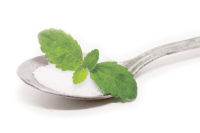Within the adult gum and mint categories, the switchover from sugar to sweetener alternatives has been nearly seamless. This gradual yet almost totally pervasive transition goes back several decades.
It hasn’t been that easy, however, within chocolate and other candy categories. Nonetheless, increased health concerns, coupled with a persistent sweet tooth amongst stressed out and harried consumers, have stimulated ongoing development by sweetener suppliers to find the right ingredient, the right formulation, the right application.
As Philippe Levresse, head of Roquette’s Confectionery Technical Services notes, “The popularity of sugar-free confections is strong, especially in the chewing gum and mint categories. The top nutritional claim for new confectionery products is “Sugar-free”. There is also a growing interest for reduced-calorie confections. Sugar-free sweeteners are lower in calories than their traditional counterparts and are ideally suited for these products.”
He points out that the conversion of sugar-based confectionery formulations to sugar-free is generally straightforward. Sugar alcohols (polyols) can be used to replace the volume and functionality of sugar and corn syrups. In many cases, polyols also provide enough sweetness on their own for sugar-free confections; however, sweetness levels can easily be boosted with the addition of high-potency sweeteners if necessary.
“Among all the polyols, maltitol is the one that is closest to sugar in terms of taste and functionality, which has led to its popularity in many sugar-free confectionery applications, particularly in chocolate and chewing gum,” Levresse says.
John Fry, a principal consultant for Cargill’s’ Truvia stevia leaf extract, concurs. He points out that in the European Union, “There is substantial experience in the formulation of sugar-free confectionery, and the issues handling bulk sugar substitutes are well-understood.”
Nevertheless, high-temperature processes can pose problems for some high-potency sweeteners, Fry says.
“Rather than formulation challenges there may be occasional issues in the detail of factory engineering,” he explains. “For example, automating addition of high-potency sweeteners may require plant changes. Generally, this only occurs where lines normally used for sugar-based hard candy are being pressed into service to make sugar-free.
Ravi Nana, Cargill’s technical service advisor on polyols, confirms that there are some processing and sourcing guidelines to keep in mind when using sweeteners.
“Besides higher cost, polyols’ use as sugar-free sweeteners are relatively low in solubility and viscosity,” she says. “Processing parameters needs to be adjusted compared to traditional sweeteners. For example, sugar-free hard candy with maltitol or isomalt requires a higher cooking temperature and needs to be cooled at a lower temperature for desired viscosity.
“Most polyols have relatively high negative heat of solution, which needs to be minimized in case of chocolate,” Nana adds. “Conching temperature cannot be higher than 50°C when isomalt, lactitol or sorbitol are used in sugar-free chocolate. “
Those same health concerns that have fueled interest in sugar-free or reduced-sugar confections are also stimulating interest in all-natural sweetener alternatives to sugar.
Although still a niche segment, the number of naturally sweetened confections on the market continues to grow, Levresse says. “The recent availability of natural bulk and high-potency sweeteners allows confectioners to formulate new products that appeal to consumers looking for natural options, he adds.
Although not strictly a natural sweetener, xylitol also benefits from a positive perception from consumers looking for clean label options, he says.
“It is found in a growing number of sugar-free confectionery products where its strong cooling properties complement many flavors with a fresh, clean-feeling mouth feel, Leveresse explains. “The dental benefit of xylitol (which shares its tooth-friendliness with the other poyols) is an additional asset.
Again, the push toward sugar-free confections has been more pronounced in Europe than the United States, underscores Fry. What’s more, it’s definitely growing, he asserts.
Fry cited several product launches featuring Truvia, an all-natural sweetener, such as several chocolate products by Spain’s Torras; Stevi-Lakritz licorice by confectionery giant Haribo; aspartame-free gum by Denmark’s Gumlink; and range of sugar-free mints by Velamints.
Although EU regulatory restrictions prohibit an “all-natural” claim for sugar-free confections, manufacturers are able to draw attention to Truvia’s natural origins, he adds.
One ingredient that has a long, all-natural sweetener history is honey. And it appears that consumers quickly identify with its wholesomeness image.
“Consumers love honey in their candy, especially lozenges and hard candies,” says Catherine Barry, National Honey Board (NHB)’s director of marketing. According to a survey conducted by NHB in the United States, 44% of consumers have bought lozenges sweetened with honey, and 27% would buy lozenges sweetened with honey. The survey was conducted via 423 consumer interviews with the primary shopper in a household.
Barry points out that for hard candies, 24% of consumers have bought product sweetened with honey, and a further 36% of consumers say they would by hard candies sweetened with honey. Jelly beans also ranked high on consumers’ wish lists for honey sweetened products, she adds, with 41% of consumers saying they would buy jelly beans sweetened with honey.
There’s another plus that comes with honey use, Barry says; it fills the body with natural energy through its 17 grams of carbohydrates per tablespoon. For candy bar or food bar manufacturers looking to capitalize on consumer demands for natural energy bars, honey is ideal.







